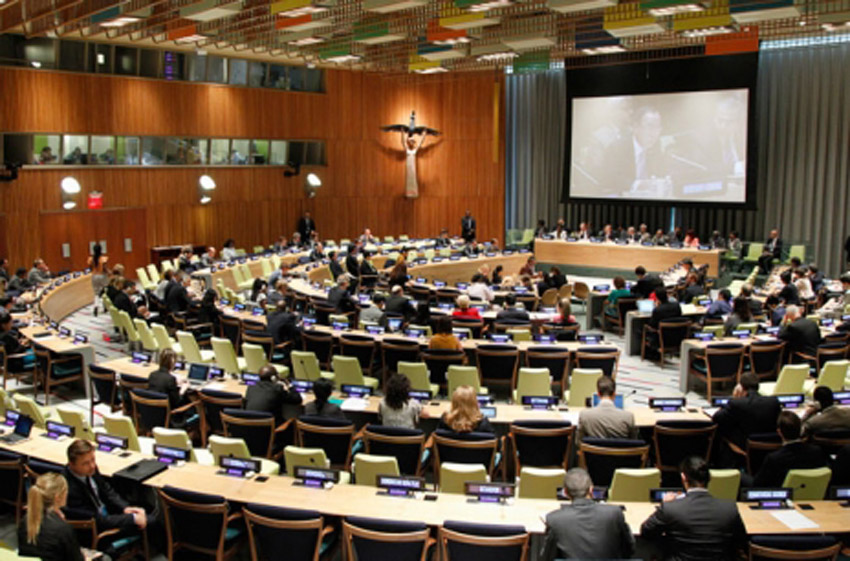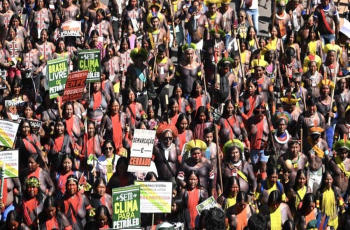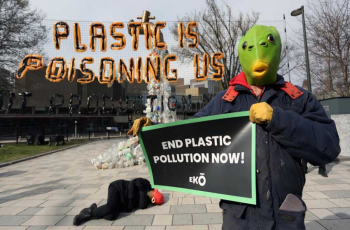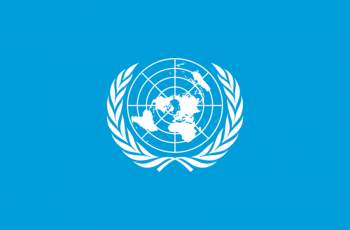In Model UN, the culmination of your work for the entire week results in resolutions, or statements of the body on what the international community should do or feel about global issues. At WIMUN, students will be formulating resolutions for eventual submission to the proper UN bodies, so developing a strong and professional resolution is key to success as a delegate.
In Model UN, the culmination of your work for the entire week results in resolutions, or statements of the body on what the international community should do or feel about global issues. At WIMUN, students will formulate resolutions for eventual submission to the proper UN bodies, so developing a strong and professional resolution is key to success as a delegate.
Before the Conference
One of the central downfalls of Model UN delegates is the idea that the conference starts when you arrive and that you shouldn’t start thinking about resolutions until that point. Though many conferences (including WIMUN) emphasize that delegates do not bring pre-written resolutions, delegates should begin considering solutions to the problems at hand long before the actual conference.
Don’t spend all of your time researching country-specific statistics, historical background, and voting history on the issue; these things are important and should be researched, but the #1 most important thing to research on any issue is possible solutions. Read speeches by experts on the issue, think-tank reports, and policy papers to determine potential actionable plans because this will be the meat of your resolution.
UN resolutions aren’t meant to complain about issues–they’re meant to fix them. As a delegate, you should be the fixer.
At the Conference: How to get started
Though UN resolutions eventually turn into long, formal documents, it’s not always how they originate. Working with your group to form a constructive outline that identifies the components of a topic and how to address them is a helpful way to increase both the quality and the efficiency of the work in your bloc. There are many ways you can do this, but the easiest way is to start by listing those working in your group and identifying the problems and solutions. This can be done with very informal language. For example, if your topic was Agricultural Development and Food Security:*
Countries: Angola, Bhutan, Colombia, Djibouti, Ethiopia, Fiji, Ghana, Haiti
Problem: Some communities are too far from food sources to get regular food supplies.
Solution A: Development of local capacity to produce food through agriculture.
Solution B: Road and highway infrastructural development to help make food transportation and delivery systems more efficient and effective.
Problem: High temperatures and an increased rate of natural disaster due to climate change are hindering some farmers’ abilities to grow their normal crops.
Solution A: Genetically engineered crops that can work in these changing, harsher climates.
Solution B: Agro-ecological practices to make farming systems for resilient.
Problem: Emergency food aid delivered to disaster areas isn’t properly distributed.
Solution A: Oversight systems tied to future food delivery contingent upon proper distribution of food aid, transparency and efforts to combat corruption.
*Obviously at the conference your plans will be much more detailed and specific than those shown in this example
Header
Filling out the Header for the beginning of the formal draft of your resolution is easy. If you’re familiar with other Model UN conferences, the one difference to note with UN4MUN procedure is that, based on UN Rules of Procedure with the value of sovereign equality in mind, no country ever needs any other co-sponsors or signatories to bring forward a proposal–even one country alone can bring forward a draft resolution. Because of this, all partners to a resolution are listed as “Sponsors” with no minimum or maximum number of sponsors. Make sure to fill out the following information in the top left section of your draft resolution:
[Name of the Committee]
Sponsors: [List all countries bringing forth this resolution] [Title of Topic]
Preambulatory Clauses
All preambulatory clauses have two other things in common: They all start with a “preambulatory phrase” (pictured above, usually a gerund), and end with a comma.The preamble of a resolution serves to explain the “Why?” of a resolution: Why the United Nations is discussing an issue, and why specific solutions set forth within the resolution are necessary. It is important to know that during the preamble of your resolution, you are solely indicating why the United Nations (or other organization) is involved, rather than actually making any statements or authorizing any action. These reasons can be “problems” for your earlier exercise, as well as references to past international actions or legislation, statistics, or the work of NGOs to highlight why the ideas set forth in this resolution are correct. It is important to refer to past resolutions in the preamble to demonstrate that a precedent exists for these actions. Recognizing work that is currently done in the field demonstrates that there was considerable work put into formulating the policies for this resolution.
Example:
Reaffirming the goal set out in paragraph 19 of the United Nations Millennium Declaration, to halve, by 2015, the proportion of the world’s people whose income is less than one dollar a day and the proportion of people who suffer from hunger,
Operative Clauses
If preambulatory clauses are the “Why” of a resolution, then operative clauses are the “What?” Operative clauses are the part of your resolution that actually takes action, implements a policy, or makes a statement to the international community on an issue. These operative clauses derive from the “solutions” listed earlier and do not spend any time focusing on why an issue needs to be addressed, but rather how it will be addressed. These clauses are the most important part of your resolution, as their contents determine what actions subsidiary organs and agencies will take on specific matters, as well as compelling the Secretariat to undertake certain tasks.
Operative Clauses are written in a similar format, however rather than “Preambulatory Phrases” using gerunds, Operative Clauses begin with action verbs, referred to as “Operative Phrases” (pictured right). Each operative clause ends in a semicolon, except for the very last clause. Each operative clause is also numbered in order of their appearance in the resolution. The final operative clause of a resolution ends in a period, thus signifying the end of the very long sentence that comprises your resolution.
Example:
3. Reaffirms the need to mobilize the resources needed to increase productivity, including the review, approval and adoption of biotechnology and other new technologies and innovations that are safe, effective and environmentally sustainable;
Once you’ve got your Header, Preambulatory Clauses and Operative Clauses, your Draft Resolution is complete!
Sample Resolution
General Assembly Plenary
Sponsors: Angola, Bhutan, Colombia, Djibouti, Ethiopia, Fiji, Ghana, Haiti
Agricultural Development and Food Security
The General Assembly,
Reaffirming the goal set out in paragraph 19 of the United Nations Millennium Declaration, to halve, by 2015, the proportion of the world’s people whose income is less than one dollar a day and the proportion of people who suffer from hunger,
Welcoming the outcome of the seventeenth session of the Commission on Sustainable Development on the thematic cluster of issues on agriculture, rural development, land, drought, desertification and Africa,
Recognizing the work undertaken by relevant international bodies and organizations, including the Food and Agriculture Organization of the United Nations, the International Fund for Agricultural Development and the World Food Programme, on agriculture development and enhancing food security,
Emphasizing that the United Nations can play an effective role in building a global consensus in addressing agriculture development and food security,
1. Encourages international, regional and national efforts to strengthen the capacity of developing countries, in particular their small-scale producers, to enhance the productivity of food crops, and to promote sustainable practices in pre-harvest and post-harvest agricultural activities;
2. Underlines the importance of the conservation of, access to, and fair and equitable sharing of the benefits arising from the use of genetic resources, in accordance with national law and international agreements;
3. Reaffirms the need to mobilize the resources needed to increase productivity, including the review, approval and adoption of biotechnology and other new technologies and innovations that are safe, effective and environmentally sustainable;
4. Recognizes the urgency of, and reaffirming its commitment to, reaching a successful and timely conclusion by 2010 to the Doha Round of World Trade Organization negotiations with an ambitious, comprehensive and balanced outcome as a key action to improve food security;
5. Notes the challenges faced by indigenous peoples in the context of food security, and in this regard calls upon States to take special actions to combat the root causes of the disproportionately high level of hunger and malnutrition among indigenous peoples.
This article was provided by the WFUNA International Model United Nations Conference, which will be taking place November 10-14 at the Grand Hyatt and United Nations Headquarters in New York City. For more information about the conference, visit WFUNA.org/wimun
*Clauses in this article selected from A/RES/64/224: Agriculture development and food security*











